It’s not your imagination: auto traffic got worse in Portland last year.
One of the main reasons: it looks like almost none of the additional commutes that originated in Portland in 2016 happened on bikes, foot or public transit. Instead, of the 12,000 additional commutes Portland added in 2016, 11,000 happened in cars.
That’s according to the latest commuting estimates from the Census Bureau, at least. The citywide bike commuting rate slipped from an estimated 7 percent of commuters to 6.3 percent, the same biking rate estimated in 2011.
Portland’s latest bike-commuting ebb — or, depending on the amount of error in the survey, Portland’s continuing bike-commuting plateau — corresponds to a similar softening of national bike-commute growth that seems to have begun at about the same time global oil prices plummeted: Thanksgiving weekend in 2014. On average, gasoline cost $2.25 per gallon in the U.S. in 2016, down 35 percent from 2014.
This time last year, we noted that the drop in gas prices didn’t seem to be affecting commute patterns yet. That may have changed.
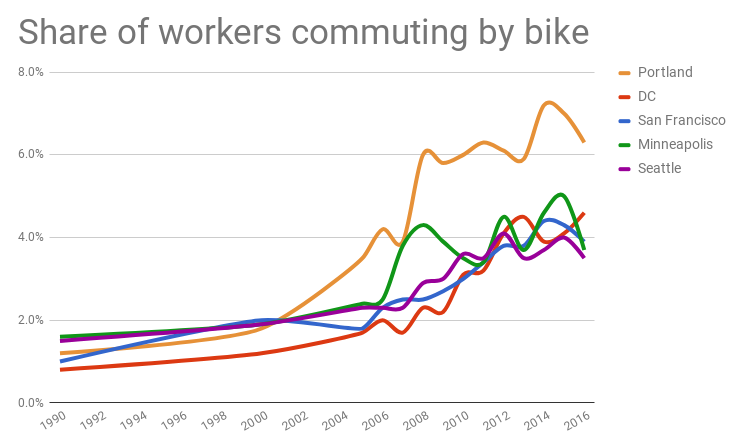
Minneapolis and Seattle also saw downticks in this year’s annual bike-commuting estimates, though (like Portland) their longer-term trends continue to point gently upward. Washington DC reversed a 2015 drop. Estimates for cities like New Orleans, Tucson, Philadelphia, Chicago, New York and Los Angeles all stayed more or less where they have been.
Even Davis, Calif., for decades the U.S. city with the most bike transportation, saw its estimate decline for the third consecutive year. An estimated 17 percent of its working residents now get to their jobs by bike, down from 25 percent in 2013.
A few cities with relatively dense urban cores, lower biking rates and recent investments in their bike lane networks did see upticks in 2016: Pittsburgh, Detroit, Cleveland.
When biking, walking and transit are flat, job growth brings congestion
Portland’s continuing lack of transit commuting growth comes as, unfortunately, no surprise. We already knew TriMet ridership per capita has fallen 7.4 percent since 2010. The steepest ridership drops are on the system’s buses, which increasingly find themselves stuck behind long lines of one- and two-occupant cars.
It all adds up to a vicious cycle of auto use.
During the first decade of the 2000s, despite an admittedly much weaker economy, Portlanders added a total of 15,000 new jobs to local payrolls. But because biking commutes and (to a lesser extent) digital, transit and walking commutes all grew substantially during those years, the number of drive-alone commutes actually fell by 4,000 over that decade.
The result, as we wrote in 2015, was a growing city that temporarily enjoyed the luxury of forgetting what it feels like for congestion to get worse.
According to the Census, that’s no longer the case. The number of drive-alone commutes by Portlanders is up about 24,000 from 2010 to 2016. You can blame population or job growth: if neither had changed, the number of car commutes would be basically unchanged, too. But you also have to blame something else: a city that has stopped improving its non-car options fast enough to keep up with population and job growth.
“The bigger investments we make in active transportation, the easier it is to get around using it,” Street Trust spokesman Romain Bonilla said in an interview Wednesday. “Without these investments, naturally people are going to be using single-occupancy motor vehicles. Which overall, in the aggregate, increases congestion.”
There’s some good news in this year’s numbers, too
A possible bright spot: Portland bike commuters are now estimated to be only 61 percent male. That’s down several percentage points from last few years and an all-time low estimate, suggesting that biking may at least be coming closer to being equally useful to male and female Portlanders.
Also, the actual number of bike commuters hasn’t shrunk much, if at all. The Census estimate is down from 23,432 to 21,982, statistically unchanged. The bike-commuting ratio fell mostly because the number of Portlanders with jobs went up. So if you haven’t noticed much change in bike traffic, that’s consistent with these figures.
Advertisement
For more and more families, the war on cars has reached a truce. Two-worker, one-car households hit another high in 2016. An estimated 27 percent of Portland’s two-worker households now live this way, up from 19 percent in 2005. (This isn’t a national trend. In Portland’s suburbs, this figure has gone from 8 percent to 10 percent; nationwide, from 10 percent to 11 percent.)
Even so, the majority of Portland families who rely on cars seem to be buying more of them. After several years in which car ownership hadn’t rebounded from the recession, the total number of vehicles in Multnomah County per resident edged upward in 2016.
The one car-free commuting mode to grow in Portland in 2016 was working at home. About 3,000 more Portlanders worked at home in 2016 than in 2015, the Census estimated, bringing the city’s work-at-home rate to a modern high of 8 percent.
A city with a growing to-do list
Today’s news comes as Portland has an unusually large backlog of major projects planned but unbuilt.
East Portland’s network of neighborhood greenways has seemingly been in limbo since former Mayor Charlie Hales yanked funding for the program in 2013. Foster Road bike lanes were approved in 2013 and have now been delayed for several years running (though the plans have also, happily, been improving). A crucial northwest Portland bike-walk bridge was funded by lottery revenue last year but won’t finish until 2020 at the soonest. A similarly crucial northeast Portland bridge seems to be funded but doesn’t have a target build date. A network of protected bike lanes and paths is supposed to arrive in the Gateway area, just east of Interstate 205 and south of Interstate 84, in the next three years, including outer Halsey and a new underpass beneath 205. Oregon’s legislature just devoted $110 million mostly for crosswalks, sidewalks and bike lane improvements on the state-owned Powell Boulevard, changes that will take years to negotiate and execute. And a network of protected bike lanes in Portland’s central city got $6 million from the regional government in 2013 and another $2.8 million from local voters in 2016. So far, that project’s public output is a single public meeting, last spring, to discuss one area of its scope.
As for public transit, the 2017 legislature also approved a major funding increase, paid for with a hike to payroll taxes. TriMet is currently calculating which bus lines to improve. The agency has two infrastructure projects on the drawing board, an “enhanced” bus line on Division Street and a new MAX line on Southwest Barbur and/or Interstate 5, but they’ve been repeatedly sent back to their drawing boards. Meanwhile, an effort to dedicate more lane space to buses seems to be getting love from both city officials and grassroots advocates.
In all, Portland does not seem short on ideas for big improvements to non-car transportation. What seems to be missing is the will to execute anything but the smallest ideas quickly — and also, said Emily Guise of activist group BikeLoudPDX, the will to put burdens on driving other than more and more congestion.
Thanks to rapid growth of high-risk auto loans, she said in an interview Wednesday, “it’s easier to get a car and get financing than it ever was before. You couple that with low gas costs and we don’t really charge for parking in Portland very much at all. … As much as people complain about the congestion and the traffic, you can still get to most places fairly easily in a fairly decent amount of time. That’s why people continue to commute by themselves.”
Guise, the group’s chair, said she hopes the new Census estimates “will kind of pop that self-congratulatory bubble a little bit.”
Faster shifts away from driving would ultimately be in the whole city’s interest, she said.
“Traffic is terrible. People can’t get to where they need to go in a reasonable time. And that includes a lot of people who ride transit regularly. And there’s just not enough space to have 11,000 — if we keep having more and more tens of thousands of people driving to work every day, congestion and traffic will only get worse, the air quality will only get worse. The cars will continue taking up a lot of space that could be used for other things.”
City transportation spokesman John Brady said Wednesday that the city will comment after the Census figures are publicly released Thursday.
— Michael Andersen: (503) 333-7824, @andersem on Twitter and michael@portlandafoot.org.
Never miss a story. Sign-up for the daily BP Headlines email.
BikePortland needs your support.



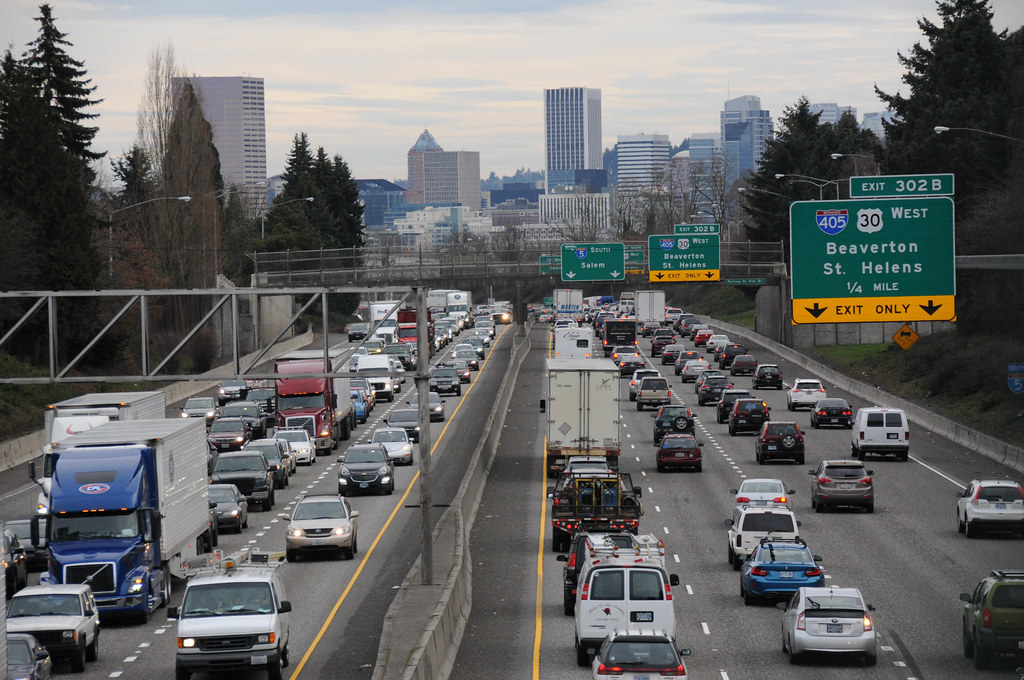
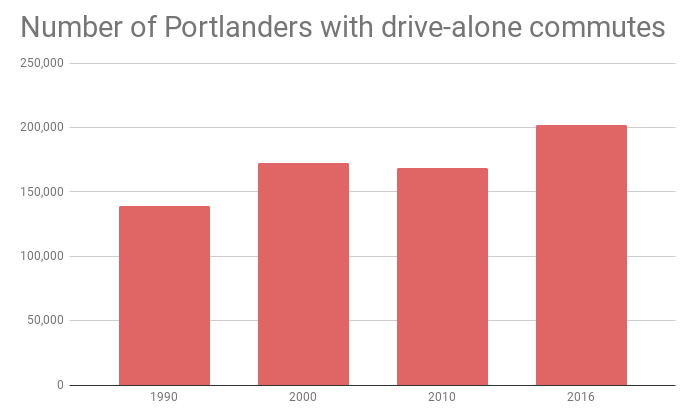
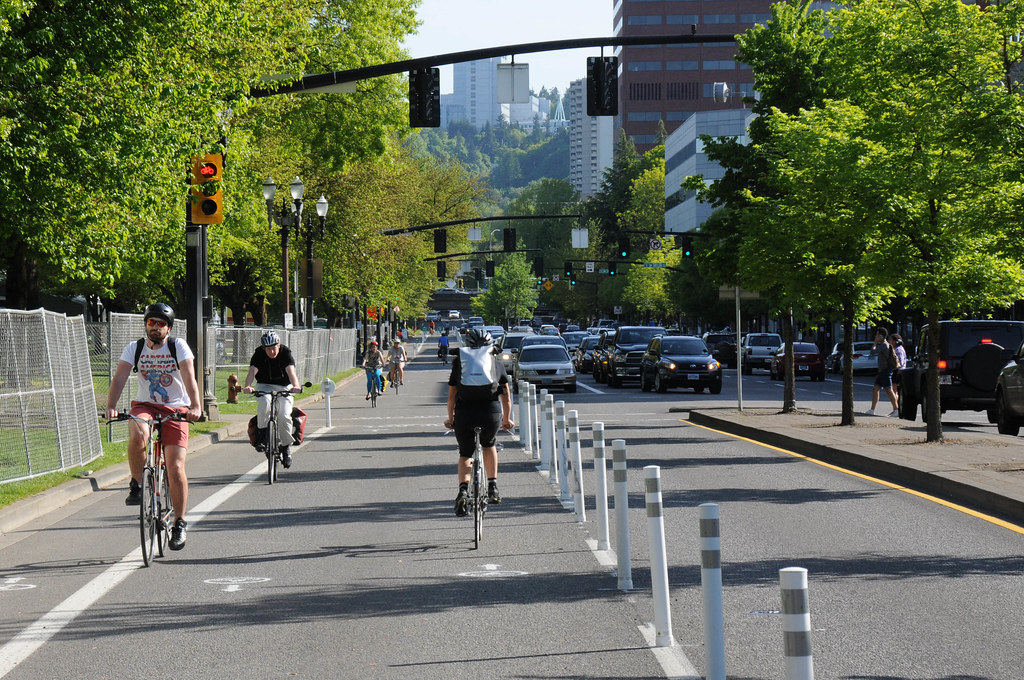
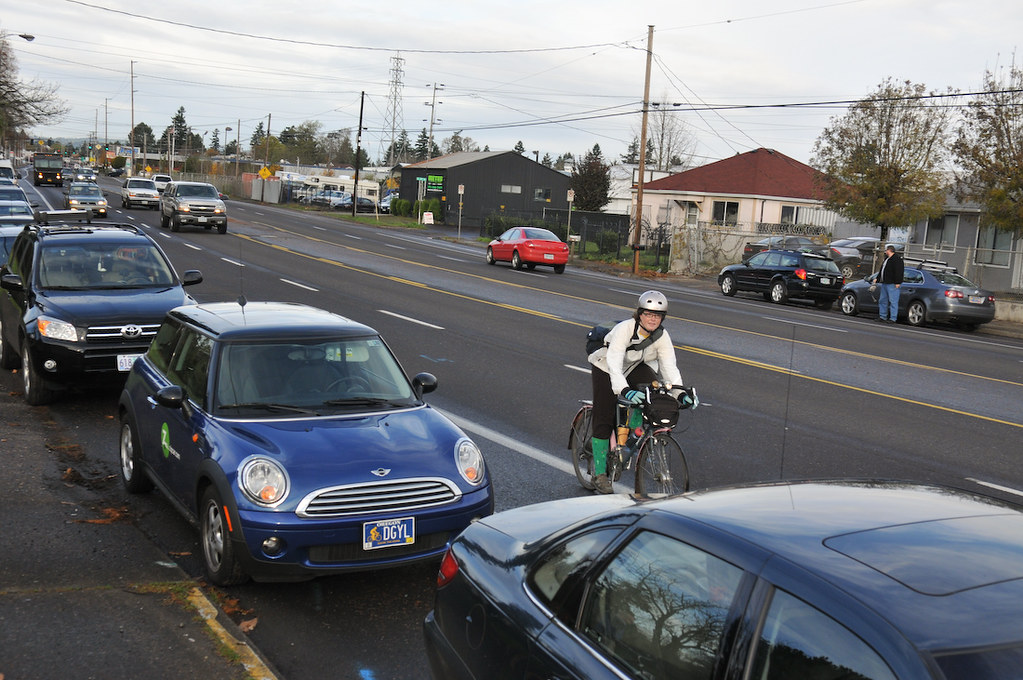
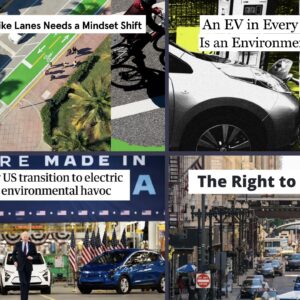

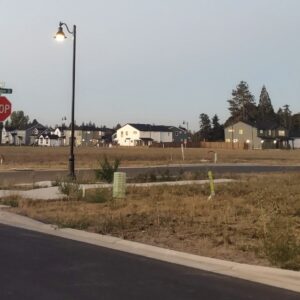
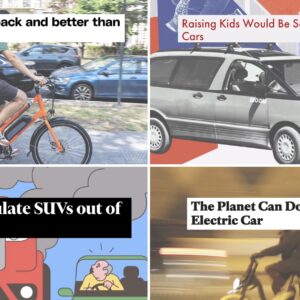
Thanks for reading.
BikePortland has served this community with independent community journalism since 2005. We rely on subscriptions from readers like you to survive. Your financial support is vital in keeping this valuable resource alive and well.
Please subscribe today to strengthen and expand our work.
Do we know where these new commuters have been living and where they need to go? Given costs in PDX, I’m guessing most of them wouldn’t have short rides in the core.
I wonder if this is actually a primary issue. PBOT can get all of the money and construction workers they need, but it’ll only see incremental improvements in bike commuting numbers unless there’s more housing closer to where people need to work. Short of some serious multimodal investment I’m not sure how 25% bike commute share will be achieved if the Dutch think a 10-mile one-way all-bike commute on flat land and separated infrastructure is extreme.
How do we get more housing close to jobs if we only build studios and don’t build new urban centers in East Portland?
Where are the major job centers? Where are the major housing centers? To cut commute times and mileage, those two community elements need to be close to each other.
Visualize a lot of not just multi-story new housing in Portland’s close in neighborhoods, but many story residential towers. If Portland wants to live with that kind of housing in the city, and if the job centers in sufficient quantity are nearby so the commute times and mileage can be kept low.
I think the increase in motor vehicle commutes is arising from people living in the burbs, rather than Portland’s close in neighborhoods. In a simple sense, I consider Portland’s outer east neighborhoods, and the Moreland neighborhoods for example, as well as Beaverton, Tigard…all to be burbs, relative to work availability in Portland. Or between the burbs, towns and cities in the area other than Portland. Burb to burb commuting. It can be very seductive, but often a last resort, to find housing out of Portland, and find having to commute a long distance from there to get work.
It’s quieter and more economical to live in the burbs. Personally, I wish everyone would just live in Portland, so it could stay quieter and more economical to live out in my area. Gradually though, more people are living out here, Beaverton, and that means more people driving. South Cooper Mtn is for me, a classic example of how to go wrong in countering increases in commuting by motor vehicle.
Gateway’s coming right along. Any decade now, it’ll be an urban center.
Really, guys, this time we mean it!
I would agree but also think that this is only one side of it, the supply side. We need to offer enough affordable housing that’s close to work so that people have the opportunity to bike, use transit or walk.
The other side is that driving must be more costly. Congestion is a type of cost (lost time) but people are willing to incur these costs to save money. This only changes if the monetary costs of driving — gas, parking, congestion pricing — increase. However, that’s a tough policy to promote because people driving to work will have to bear the costs in the short to medium term, until they have adjusted their commute.
I agree with both of your observations. It’s going to take some combination of bike infrastructure, denser and more affordable housing (and by extension more supermarkets and schools) near city cores or work places, better mass transit for multi-modal commuting, deprioritizing automobile traffic, and probably massive social change either by an induced shock (oil prices) or massive sustained pressure by the majority to get everything better. It’ll be quite a balancing act!
Denser AND more affordable would be a neat trick!
Brazil figured out how to do it. Let’s follow their lead: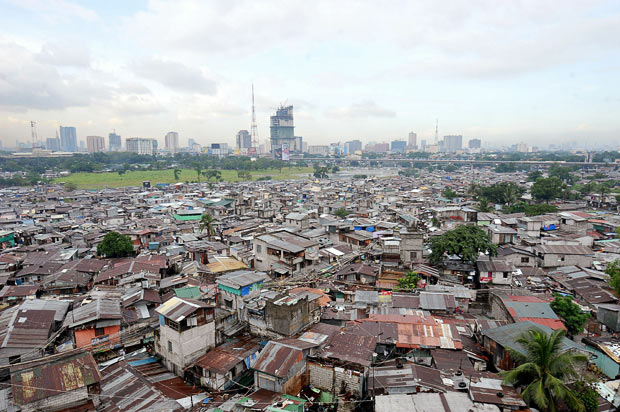
I think we need to pair bikes with transit to make longer, car-free trips fast, easy and convenient. I really think the City is banking on self-driving cars to bail them out, why else the near-complete stall?
We don’t. And as Kitty correctly notes below, we don’t even know if they’re new to town or local kids getting their first jobs or longer-term commuters changing habits or people not changing habits who might have in a different scenario.
That said, low-paid service workers, especially restaurant workers, have always been a very large part of the bike commuting coalition and it’s certain that many of them have been priced out of proximity by our housing shortage.
https://bikeportland.org/2016/04/13/the-lower-northwest-district-is-portlands-invisible-capital-of-bike-commuting-180621
I live in Tualatin now since North Portland is too expensive and I still commute to PDX. I have researched taking public transit and it is not worth my money or time.
Emily said “you can still get to most places fairly easily in a fairly decent amount of time. That’s why people continue to commute by themselves.”
then
“Traffic is terrible. People can’t get to where they need to go in a reasonable time.”
I’d like to know if the problem newcomers bringing their cars, or if it’s longer term residents starting to drive. Either way, this uptick in driving is very visible, and seems to be impacting bicycle routes disproportionately. PBOT really needs to turn it up to 11. Right now, they’ve got the knob set around 4, and that mini-Stonehenge just isn’t doing it for me.
It’s all relative. Living in Connecticut, I knew people who drove 40 minutes to get to the train to NYC. Living in SoCal the expectation was of long commutes. Our “horrible traffic” is a walk in the park for folks who have actually dealt with traffic.
moved here from nyc (and prior chicago) and not as dismissive about traffic here…traffic here blows especially for a town of its relatively small size…and the issue of traffic is exacerbated by the lack of travel options
Yup, traffic in LA or the Bay Area is better than Portland – they have much better freeways. A 2-lane N/S freeway through Portland is not acceptable.
Those who live in NYC are used to good transit and a walking environment in neighborhoods, those from outside the city are used to commutes that are longer and more frustrating. Those folks moving to Portland find it easier, as I did moving from CT to OR.
It does seem like there are more cars with out of state license plates driving around Portland….but as you pointed out, this wasn’t clear as to whether this was studied.
Yep…lots of out of state plates driving around on both sides of the Columbia now too…
It is important to remember that “additional commutes” does not mean these are newcomers. Michael is right. These commuters may be people living in Portland who previously didn’t have a job, or young adults who moved back home after college. I moved here from LA and I bike and take transit everywhere and I don’t own a car. I’d say, as a newcomer, I’ve done more for supporting safer streets and more active transportation than many Portland locals who drive everywhere.
To continue to frame our transportation mode share problem as “newcomers vs locals” is unproductive and misguided. Just because you’ve lived here for a long time doesn’t give you any more right or entitlement to drive.
In terms of housing, it’s really not a debate about East Portland vs Central Portland. The real problem is the majority of the City is exclusively zoned single family, which pushes destinations further apart. In order to bring people closer to jobs and services so biking is easier, we absolutely need to add more density and more housing choices in our suburban-like single family neighborhoods.
Why not more choice in the many new apartment buildings we’re building? We’re adding density, but only for certain people who can afford a certain amount.
Most of the close in high priced housing is filled with people who make enough money to also afford a car. They just built a new building by 7th and Knott. Claimed they didn’t need to build alot of parking because it was so transit and walking friendly. Now 100s of cars line the street for blocks in all directions.
Same in our neighborhood. Inadequate parking at each home means many cars lining the street – people have to walk 2 or 3 blocks to get to their parked car.
That sounds like a good thing, billyjo. If people are choosing to use “free” parking on the street rather than pay more for an apartment with parking, they obviously feel there is parking on the street still available. If it’s truly full, people who don’t want to deal with finding a rare parking space will start paying for parking.
Sorry to disagree, but it is not ‘free’ parking, it is a publicly subsidized parking space in the public right of way, for which there are many better uses than storage of private automobiles.
How much do you think that subsidy is? Would we spend less if we got rid of the parking? How much would it cost to do that?
There’s a reason I scare-quoted “free”.
But can you agree that with all the Californians moving here with you you’re adding to the housing crunch, forcing people further east in their search for affordable rents/mortgages and that may be adding to car trips?
Hey, thanks for biking, I guess.
A growing city needs to add housing as fast as it adds residents or rents will go up. Since we subsidize parking and driving, that’s what we get instead of more biking and housing. “You get what you pay for.”
Maybe if buildings built without parking were restricted to tenants without cars, we’d get a different outcome.
I’ve seen this first hand. So so many of my friends that previously lived close in are renting and buying farther out. We need to beef up our infrastructure in the deeper East. Portland is relatively flat. Long bike commutes are completely doable, but safer lanes and routes are badly needed..
and better bike service on MAX lines
I’m sorry the snark of my first comment to you. But you didn’t ride around Portland in the 90s and early 2000s. You really haven’t done that much for biking in this city if you’ve been here a year or two or three. You haven’t moved here and are saving us. That rubbed me the wrong way. And though I own a house again it’s a lot farther out than I’d really prefer and cost way more than it really should have. As a consequence we have been in a car more in the last couple months than I feel like we were all last year (an exaggeration but it does feel like this). I thought I’d mellow out on my California newcomer hate but it hasn’t started yet. I’m sure you’re a totally nice person and do mean well.
Now you’re opening yourself up to the old, “I hate people who move here and then try to change things.” Note that the overwhelming majority of Portlanders and Oregonians drive first, last and always, so your cycling and advocacy make you a threat to their faux local view.
Haters gonna hate. The rest of us love the fact that some folks come here to join us on bikes.
Based on my observations, it seems like a lot of these new driving trips are originating in outer-east Portland. There has definitely been an uptick in traffic out here, but I am also seeing some very questionable vehicles on the road. I have a feeling the sub-prime auto loan effect combined with low gas prices is a big contributor.
…and the recent years lack of traffic officers enforcing safety equipment defects for motor vehicles…
We’re not promoting our ped/bike paths well enough (and signposting them, too) and we’re not building the facilities we need fast enough. True, as the story points out, there are projects in the pipeline, they’re not being pushed thru that pipeline fast enough. Connections with the east, south, and west suburbs should be a no-brainer thing, but politics seems to keep getting in the way. The eclipse illustrated the need for connections down valley, but it didn’t seem to inspire any moves in that direction from anybody who matters. The wheels just don’t turn as quickly as they should.
My biggest takeaway was the statistics from Davis. I used to live in Sacramento, and both my sibs graduated from Davis. You could not find a more bicycle-friendly community (aside from the hot weather). A nearly 1/3 drop in bike commuting is stunning. I would love to see some followup reporting on that. I think it would tell us a lot about the public’s attitude toward bike travel.
Those Davis numbers jump around a lot – it’s a pretty small town as you know. I wouldn’t read a ton into it unless the trend persists.
Michael – its great to see another one of your articles…I miss the wonk factor…I had to loop up to the top once I started seeing data analysis just to make sure it was you…;-)
I wouldn’t call 65,000 a small town, and I’m guessing (but don’t know for sure) that they have pretty good data collection methods. My point is that there is (in my mine) probably a demographic change going on, in addition to the sheer weight of traffic danger, that is causing these numbers. I live in Bend, and despite it’s reputation for outdoorsyness, it has pathetic bike commute numbers. Poor bike lanes, too many distracted/inconsiderate drivers and an influx of older, well-to-do retirees have resulted in little interest in bike commuting.
65k is a small town.
Sacramento’s unemployment rate has gone from 10% in 2013 to 5% in 2017, so Davis citizens are probably finding more opportunities in the greater Sacramento area (which is insanely suburban and bike hostile) that are worth driving to.
Interesting point. I grew up in Sacramento in the 50’s and 60’s when it was a medium size very livable city. Now it is automobile hell. I wonder how bike commute numbers are affected by a pattern like the one you suggest.
I think Davis is probably more tied into the rest of the Sacramento region now than it was a few decades ago. And just anecdotally there seem to be some larger tech/science companies locating in suburban style campuses on the fringes of Davis/Yolo county to take advantage of the UCD talent pool… these employers certainly recruit regionally and have a lot of folks driving to work. Not to mention they are not in very bikeable locations within Davis.
I lived in Davis from 1980-2000 and still spend a large amount of time there (family, friends and business interests). Long before the Census compiled the first ACS numbers, Davis was truly the Bike Capital of the World. Nearly everyone rode their bikes as their primary means of transportation, even some Sacramento-bound commuters such as firemen, CalTrans workers, teachers and biomedical researchers. Had there been an ACS, it would likely have shown Davis at well over 50% bike commute. Looking down a random street during rush hour often revealed hundreds of bikes and a couple of cars. It was truly beautiful (and why I moved there).
There were some very dark days for cycling starting in the late-’80s when the police stopped enforcing the traffic laws (previously it was zero-tolerance enforcement). Oddly, during the dark ages for Davis cycling, the city built huge amounts of segregated infra, the very thing that people on this site maintain should have led to an INCREASE in bike use.
After some recovery over the past decade, Davis hired a new bike-ped coordinator in 2014. She is very hard-core for separation and the “one right way to ride” that comes with that.
Davis, along with Portland’s nearly decade long plateau, should be a warning to everyone that pursuing separation and fear-mongering will fail. Pursuing zero-tolerance traffic law enforcement, on the other hand, has never been shown to not encourage cycling.
It’s all relative. Living in Connecticut, I knew people who drove 40 minutes to get to the train to NYC. Living in SoCal the expectation was of long commutes. Our “horrible traffic” is a walk in the park for folks who have actually dealt with traffic.
I wonder if this is actually a primary issue. PBOT can get all of the money and construction workers they need, but it’ll only see incremental improvements in bike commuting numbers unless there’s more housing closer to where people need to work. Short of some serious multimodal investment I’m not sure how 25% bike commute share will be achieved if the Dutch think a 10-mile one-way all-bike commute on flat land and separated infrastructure is extreme.
How did the study account for the increase of people needing to live father from the urban core due to increased housing costs and the subsequent need to commute farther than five miles to work (in other studies most people are unwilling to bike more than five miles to get anywhere)?
I has to be a factor. I’ve switched from an occasional bike commuter (bike to work 2-3 day a week) to a single occupant car commuter as the house we liked that we could afford is in Milwaukie and I work in Hillsboro. I’ve looked into using Trimet, but it’s too slow. Why spend about 90 minutes each way, on Max (not including the time to get to and from a station) when the typical car commute is only 60 minutes each way. I miss my time biking but I’ve no desire to spend 3-4 hours a day commuting. The flip side or our move from Tigard to Mikwaukie is my wife is now closer to work (< 1 mile). So our total impact from car usage has not increased and may have dropped slightly.
Interesting arithmetic. You would rather sit in a car for two hours, and increasing, than ride a bike three hours. When one considers that a human needs an hour of exercise per day to avoid weight gain (nurses study) and probably more for optimal health, you’re either losing health and life expectancy or you’re losing time. (Two hours of driving plus one to two hours of exercise is going to take longer than three hours of riding.)
It’s your choice, but it doesn’t look terribly rational to me. Sadly, you have a lot of company. Bummer for you, your drive time is going to increase as you get more company.
This is absolutely going on. But for it to affect the citywide statistical trend, the better-off people who are moving into those inner city homes would need to be either much fewer in number (which is probably a little true) or significantly less likely to bike commute (and there is not actually a super strong correlation between income and bike commuting, positive or negative). My own hunch is that both of these factors are at play … but the bigger story is not a drop in bike commuting, only a plateau. That’s easier to explain: we haven’t been doing much to make it better.
There is going to be major pain if gas increases in price quickly the way it did back in the late 2000’s. Fortunately, east Portland has okay bus coverage.
The plateau has been going on for nearly a decade. Should I post links to all the BP stories on “improved” infrastructure? It’s not like the city limits of PDX have expanded so much that all those projects have been swallowed up by all the new development.
How about a simpler explanation? We’re going about things the wrong way and are approaching the limits of what the separation approach can achieve in an American city in the absence of functional traffic law enforcement.
Hear, hear. Enforcement would change everything.
I do know the increase in auto traffic is deterring people from biking – myself included. I just moved out of downtown, partly because I realized that I had more or less stopped walking or biking, which was the whole reason I was living there. The clouds of exhaust in Goose Hollow are enough to make you feel unpleasantly high, and the one or two places I needed to be very cautious riding to SE or NE started multiplying – too many close calls and too much stress just from being surrounded by heavy traffic all the time. All my sneaker, car-free routes were Wayzed out of existence – and people started yelling ‘you’re not a car!’ at me out their open windows. I’m not kidding – this actually happened something like 3 times, all downtown, and in all cases, I was actually moving as fast as traffic – – it was just seeing me there at all that was apparently a push too far for these people. Downtown smells like pee and cigarettes and it’s dirty and depressing. I’m sorry to hear bike commute share is down, but I’m not terribly surprised.
Even so, the housing they left behind is still there, and occupied by someone else.
I suspect there is a demonstrable correlation between income level and transportation choice. Just saying “housing is more expensive” doesn’t really cover those details though.
Unfortunately there will be a further uptic this winter as over a million cars are sent by insurance company refurbishers to the northern tier states from the Houston area flooding. All soaked in salt water. Some of them may be actually cleaned but they will rust out in about 3 years. Makes for cheap used cars.
I think it is interesting that you didn’t attempt to delve into the reasons that projects aren’t getting built fast enough. From where I sit, the Great Recession denied opportunity to a large swathe of recent graduates, 2007-2013, in the transportation planning and engineering/construction sectors. This has led to a huge shortfall of qualified personnel to actually design and implement projects. Growth in the City of Portland is absolutely massive and we do not have a large enough workforce to keep up.
Actually, the recession freed up many experienced engineers, and especially architects when they were downsized. I’d guess firms get plenty of resumes for every advertised job opening.
Much of our influx of new residents in the last two years have been from places that have low bike commuting rates and a greater percentage of auto-addled folk. I am basing this on the license plates I have seen. So people move to Portlandia from Phoenix or Houston but keep their autotopia lifestyle.
Too many potholes and bumpy greenways doesn’t help.
Too many potholes and bumpy greenways does not help.
Given how much of the traffic is still cross-Columbia, Trimet and Ctran need better integration. (The Hop card is a start, in that it’s easy to pay across systems.) There’s only one bus that goes from downtown Vancouver to anywhere in Portland, and that only runs every half hour if you’re going against the main flow. Ctran has made improvements within its city, including the Vine. That progress means little in the long run if it doesn’t go across the river. I have so many coworkers who would bus if it were a possibility
We need dedicated transit lanes across both bridges if transit is going to see any major ridership. The busses are stuck in traffic with everyone else.
And the Hawthorne and Burnside bridges.
People don’t just live in downtown Vancouver.
134; 199; 105; 164; 177 are all C-trans lines that come downtown weekdays during commute times. the 105 is the only one that travels between downtown Portland and Vancouver all day.
Other routes cross the river to the nearest train stations – Parkrose and Delta Park.
The drastic increase of Lyft and Uber has impacted traffic as well. And they are nearly 100% distracted drivers because they’re trying to figure out where they’re going. It’s not good.
Based on my own observation I agree – but I would have expected this to show up at least a bit in the Census’s “taxi” numbers. They don’t. Either almost nobody is using Uber/Lyft for the commute trip, or they’re reporting it as “carpool” or something.
I agree it doesn’t affect commuting as far as I can see, but it definitely increases traffic #s overall — and those drivers are NOT very safe.
I see people using Lyft/Uber during commute hours so it’s a factor to some extent. It could be that people being surveyed don’t see Lyft/Uber as a taxi service.
Which individual in Portland metro/city government has the greatest accountability/ power / vision for increasing bike mode share? Or is cycling just Portland’s side piece?
Tolls, tolls, and more tolls.
Value pricing, value pricing, and more value pricing. Its a legislative priority!
http://www.oregon.gov/ODOT/Get-Involved/OTCSupportMaterials/Agenda_B_Attach_1_Value_Pricing_PAC.pdf
As housing prices were rising, my wife and I, as well as several of our friends, were happy close-in renters and bike commuters. We all realized we had to buy now or never. Most of us ended up further east. Commutes went from around 3 miles each way up to 14 in my case. I embraced the longer commute, my friends did not. Seeing the influx of young families in east Portland I’m sure we’re not alone.
This was my story as well. We see article after article about affordable housing only becoming available farther out of the the core. The new units that are being built right now in my neck of the woods that will come “online” in the next few months is staggering — and at least some of those folks will bring cars with them to add to the commute into town.
This is, of course, where I suggest anyone who thinks that a 10+ mile commute is untenable, to at least consider trying out an electric assist bike — whether modifying a tire on their current bike or purchasing a dedicated ebike.
My ride today — I kid you not — took the same amount of time commuting as it did in the car yesterday. The start of the school year always seems a bit brutal, but it’s been crazy this week for some reason.
Of course, today, I also had the added benefits of riding.
[Note – I do not sell ebikes. No financial interest, at all, in converting riders for that reason. 🙂 ]
The issue with a 10+ mile all-bike commute is that at some point it simply takes too long to cover distance effectively, even with assisted bikes. My commute’s 14 miles one-way; Google says it will take 1-1/4 hours to complete (not including shower time at the office as I have some hills to climb). Most people don’t want to spend 3-4 hours a day commuting when a car can save half that time – especially when one has kids to shuttle around.
Multi-modal is definitely an option for me but I would have to go folding bike; the best routes are popular with other cyclists and the bus racks are sometimes full during the commute times (which forces a wait for the next space available on the bike rack).
I commute 13 miles each way from NE to SW.
50 minutes.
Try driving it that fast…..
Besides driving, the multimodal option is what most Dutch people who live more than 10+ miles typically use since most of them also don’t want to regularly ride that distance. Dutch kids living in smaller towns and villages are a common exception however, because their towns often don’t have a high school. It’s very common for them to have to commute 10+ miles (one way) by bike everyday and in all weather conditions. There’s nothing wrong whether people want to cycle 10+ miles everyday or only occasionally or even once in a blue moon. But there needs to be proper routes and adequate infrastructure to facilitate that for the majority of the population who don’t fall under the fearless riding category.
Here, in the Netherlands, e-bikes are really becoming popular with elderly people, and allows them to cover further distances with much less effort. For the medium distances (the 10+ miles), this could be a viable alternative for people.
10+ miles one way is not an issue by itself. For starters, traffic is miserable in this town. If it’s faster to go 5 miles by bike, it’s not going to be slower to go 10 or even 20 unless road conditions change.
E-bikes have gotten to the point that longer commutes don’t require a high level of fitness to achieve reasonable commuting times.
However, even under the best riding conditions, long commutes have only a selective appeal. There is no way to avoid everything that goes with being outside that long. Riding in inclement weather for even short distances on protected paths is a hard sell. Stretching that out doesn’t make the proposition more attractive.
Deeel, my husband and I are in the same exact boat. We were renting for five years near 26th and Holgate, but bought our first home a year ago out at 148th and Division. Definitely felt the need to buy while we could–our house has appreciated $80k so we’re priced out already with our current incomes. It’s crazy! Commute went from 5 miles to 10 miles. I was bike commuting from the rental, but with the longer commute and need to drive during the day for work, I stopped biking. My husband does walk/bus to work, but it takes him an hour and 15 minutes with no transfers. We certainly drive more than we like–nothing is quite in walking distance.
This is definitely a major factor, the cohort of central city renters buying home just a bit further out than they want to bike (or walk or bus). I’m feeling quite lucky that I was able to buy early enough to stay within easy bike range (SE 35th).
But to think long term on this, these folks will drive change in their neighborhoods, leading to more local destinations (both work and play) that they don’t need a long drive to.
If I were king, I’d be trying to entice the development of flexible, high-capacity office spaces in East Portland. Make it attractive for builders to build, for businesses to start up or relocate there, and for neighborhood workers to walk in every day.
Ms. Lewis and I spent our entire adult lives in inner Portland. Now in our 40s we’ve found ourselves priced out of those neighborhoods (we bought a house; now or never is right) and living farther south than ever and east of 205 for the first time (the other option was Vancouver, but growing up there, I didnt’ think I could have handled that). Cycling out here is garbage. As is walking. And my commute is longer. I’m a bike guy to the bone, so driving isn’t an option, but I could see how moving far out like we did would be very discouraging and keeping the long commute up might be too much.
I think about reports like this, and about the Portland Business Association’s campaign to remove Better Naito, and I want to bang my head into the wall.
While I would be the first to blame this on Sloth and Wickedness, I think there may deeper socio political trends going on here. While distance and safety are certainly factors ,we have to think about what makes someone a daily commuting cyclist. Does someone who got their first car at sixteen and then drove everyday to high school and then college just pick up a bike and start riding when they get to Portland? Was Portland’s early uptick in cycle commuting due to an anti-establishment trend in lifestyles and music that drew people here in that era that translated in to cycling? Are those migrating to Portland now, more of an aspirational consumer crowd who grew up on the Kardashians and “Pimp My Ride” and view driving as an essential part of their lifestyle? Many questions, few answers.
Agreed, bikeninja. This isn’t in any way scientific–just anecdotal and my opinion after a lifetime here–but I would say definitely the demographic of newcomers to Oregon (and Portland in particular) has changed. It makes sense. You attract an entirely different personality when you’re not the Hot City. We get people now who are intensely trend-conscious, and who are scenesters. We get other people too, but I curse the effing scenesters and I hate them. There, I said it. p.s…I suspect they’re the reason the driving’s gone to bloody hell too. Self-absorbed scenesters. Pffft.
It would be interesting to parse out just the Oregon cities’ data, to see what impact WA drivers have on auto congestion.
My personal observation from east Multnomah County is that 1) bicycle commuting has increased in the past year or two and 2) electric bikes appear to be going from a novelty I would see now and again to something people are beginning to use on a regular basis.
The second point is very significant to this discussion because even though decent electric bikes still cost $2,0000 – 3,000 that’s only several years of only insuring a car. I think now that major manufacturers like Trek and Giant have entered the market with ebikes that are designed from the ground up around their powered drive trains, you will see volume manufacturing and jockeying for market share drive prices further down. I expect decent ebikes to be pushing the $1,000 price point in the next few years. This should have a very significant impact on ridership. People who wouldn’t consider riding because of their condition, age, motivation, distance from work, hills, whatever will suddenly find themselves being able to do so.
Several coworkers who bought ebikes have become incredible prophets for the technology and, more to the point, a few were not interested in bicycles at all prior to their ebike experience. One bought a regular road bike this year and rides w the Portland Wheelmen now.
I hope I’m not getting myself too excited about this but it is a really promising development. The downside is that I have to share existing infrastructure with more and more riders.
After years of commuting to work on a standard road bike (North Portland to South Waterfront) I moved to West Linn, and to the top of Hidden Springs. My bike commutes immediately stopped. However, after a recent e-bike purchase I’m back in the saddle, out of my car, and commuting to work again by “bike”. For me personally, an e-bike is the only way my aging body can endure 22 miles plus 1700′ elevation a day, 5 days a week… I’d say my car commute both ways averaged about 55 minutes. With an e-bike it’s about 80 minutes now. The extra time just gets lumped in as free exercise and much better views. I love it!
I think e-bikes can play a key role in bridging the divide between suburb dwellers and their downtown jobs. It’s just getting everyone to realize that this is a totally doable option. I’m trying to spread the word to everyone I talk to where I live.
Side note, West Linn has recently finished updating their Rosemont Trail. They’ve installed bollards along the trail at each intersection, and remove the offensive signs with “No bikes allowed”. Some minor progress in the burbs… Much more is needed though. The #1 most needed project in that direction, in my opinion, is to replace that damn useless trolley line running from Lake Oswego to South Waterfront with MUP for pedestrians and cyclists. Why they can’t do that just baffles me! I think Dunthorpe $$ has something to do with it though.
Amen to a better route between Lake Oswego and Downtown. The climb up Terwilliger is not easy (and OR43 is not rider friendly). There has been several rounds of talk about making that improvement, but it comes down to lighting or some such (and, my guess, rich folks along the river who would like to keep access restricted.) Perhaps there will be a renewed push when they seriously start developing the Oregon City falls around the Heron Mill?
If I am riding a $1,000 bike, or even a $500 bike I want a decent safe place to park it – preferrably out of the rain; and if my commute is more than about 3 miles I’ll want a shower. If that doesn’t exist, then biking looks a lot less attractive.
the standard deviation over 5 and 10 year periods is more suggestive of continued stagnation than of a genuine increase in 2015 and 2014.
Hm…, just thinking out loud about 11,000 extra cars parked somewhere in the city during the day. Assuming a 10×20 foot parking space for each vehicle, that’s about 50 acres of land devoted to parking, or roughly the equivalent of 440 50×100 foot residential lots. Looking at lots on Zillow suggests that $150K is a reasonable swag for the average price of a 50×100 foot lot. That puts the cost of those 50 acres at around $66 million just for the footprint of the parked car. That doesn’t include costs of real estate associated with accessing each of these parking spots (driveways, garage ramps, etc). This alone is a hefty price tag for one year.
“The High Cost of Free Parking”
The cost of parking is $0. The parking spaces already exist, AND if more need to be added someone will make money renting them out by the hour.
I see the bike commuting numbers continuing to drop. Why?
1. Because many areas of Portland have grid streets. Buildings with no parking use up the street parking. This means cars park all the way to the end of a cub. This means more ‘tense’ moments on a bike as you hope a car crossing perpendicular to you doesn’t hit you due to lack of visability.
2. Grid street cause cars to utilize quiet neighborhood streets and greenways as alternatives to the back up main street. This means more ‘tense’ moments on a bike
3. Everyone has a smart phone and google maps…this means there are no hidden shortcuts anymore and cars will drive where the gadget tells them to go to save a minute driving time.
‘Tense’ moments can lead to cyclists not wanting to cycle anymore. A good example of a ‘tense’ moment is N. Williams near New Seasons. Too many of these and people just give up.
Ugh, every.damn.day on NE Couch – I can practically hear the cars breathing down my neck who scooted over to avoid traffic on Burnside.
I have stressed the importance of your first issue for years in relation to the safety of pedestrians and cyclists.
I am consistently criticized by a variety of types.
1) the pro-density and anti-car crowd embraces on-street parking because they don’t want new parking spaces built
2) the subsidized housing crowd is eager to offload the cost of parking into the public sphere
3) The homeowners who didn’t buy enough driveway for all their cars insist on their right to park in front of their house
4) The traffic calming crowd argues that on-street parking reduces car speeds. I do not disagree with the point. For me, however, reducing collisions is more important than reducing speeds. The larger issue for me, however, is the general sense of well being of all road users. Stressing car drivers to get them to slow down isn’t healthy for anyone. The feeling of not being able to see oncoming traffic is something that all road/sidewalk users can relate to.
The percentage of people interested in reducing on-street parking probably isn’t even a whole number. Bringing it up is a waste of time, but I cannot resist the rant sometimes.
I tend to agree. However, imagine the drop off in the number of those tense moments if PDX committed to zero-tolerance traffic law enforcement. Picture all motorists staying below the speed limits, passing with care, stopping at stop signs behind the limit lines, actually stopping and looking before turning right on red. Driving would get slower and cycling would thus be relatively faster as well as more pleasant. Cycling would boom.
But, it’s not going to happen. We’re going to be having this same woeful conversation when the ACS numbers come out in 2025.
Each tie that I walk the three blocks from Shaver St to New Seasons via Cleveland I have to walk around at least one car which is parked blocking a crosswalk. I typically call parking enforcement during their receiving hours, but I am just one person and illegal parking is rampant nonetheless. To me, it’s a symptom of a wider social disease of entitlement, but then I’m a bit of a cynic when it comes to my judgement of modern American culture.
Perhaps more sloppiness and lack of consequences than entitlement?
All three. Americans are boors and uppity and getting uppitier all the time. Uppity With People! USA!
Lack of consequences enables entitlement.
“Franky, I deserve this spot.” ?
Don’t walk around them, walk over them.
We moved from close in to Gateway. I intentionally chose there because of the closeness to transit. 5 months later, riding max for everything, we’re shopping for a car to get away from the daily freak parade.
Definitely a problem on MAX – the stations do not feel safe. Apparently the feeling is real – there is frequent police activity at MAX stations.
Do programs exist in the Metro area to help people who want to drive a carpool van? Carpooling would be the quickest and cheapest way to get cars off the road – even if it’s just a 2 person vehicle. No paid drivers, buses, rail lines, bus lanes, etc – just you and me doing our part. People don’t want to do it – I understand that – but if there is a financial incentive, they might. If gas suddenly was in short supply, people would carpool quickly.
12% growth for 3 years. (or so)
That’s all that needs to be said. Growth downtown has been single and double occupancy apartments primarily, thus not families. Workers preferring those downtown living spaces (who can afford them) commute OUT in large numbers to Intel/Nike. Schools downtown are suffering, there are few places for families to live down there and no plan to get back the livability lost to the traffic and “campers”. So we become more like every other city and sprawl, yet unlike them it’s because we are so open to ideas we cannot agree to one.
Well said, Erleichda. “…we are so open to ideas we cannot agree to one.” Heavy sigh…
PBOT takes baby steps when what we need is a movement.
The bike work they have been doing over the last five years is all garbage that few use and due to its high visibility and perception of causing congestion by inconveniencing drivers, will have a negative counter movement in the decade to come.
We have really bad traffic for our size. People are upset and making it hard to drive through intentional design is not working. They need to focus on removing parking along arterials and give that space to bikes and buses only.
in the decades to come people will wish that we had inconvenienced drivers more…
Kinda wonder about the weather’s impact. Where we live it went from freaking monsoon rain, to record setting heat. Neither of which do people like to ride in.
I would argue based on my time working with folks on Swan Island…ie getting them to try and leave the car at home…that the price of gas is the variable that correlates best with mode split. We have had cheap gas for three years now, enough to get used to it. I’m seeing $3 gas now, but we need to get to $4 to have an impact, and I pray for $5 when I hear the lawn care guys fire up, not to mention the fate of the planet.
Nice to see your byline, Michael.
I wonder if it is the price or the rate of change of the price. When gas prices ramped up quickly back in 2008, $3/gal was scaring people into not buying a new SUV and into exploring other means of getting around. Now that it settled in at just over $2/gal for a while and has very slowly, almost imperceptibly, risen back up to nearly $3/gal, there is no sense of urgency about gas prices.
We need price shocks to make a difference to the apocryphal frogs in this pot. Unfortunately, it looks like those shocks will have to come from outside, since our culture is more wedded to a desire for cheap driving regardless of the consequences than ever.
It will take a much bigger shock than that to change behavior. My guess is that around $4.50, you’ll be able to tell some differences but they wouldn’t huge. At $8, I’d expect to see a substantial shift, though many would still drive.
Note that if you have a high mileage vehicle and don’t drive that many miles, even $8 is not that big a deal.
Oh, I agree that we need much larger shocks and they need to last longer. By that, I mean the price has to continue to rise for several years if we are going to see substantial behavioral changes.
However, even the small adjustments people were making back in 2008-9 were noticeable. I observed people using their cars instead of their SUVs for shopping; there were also slightly fewer cars on the road and they seemed to behave better towards peds and cyclists (perhaps out of some misplaced sense of pity). I’m much happier sharing the road with a standard car than with a light truck; it takes up less space and if something goes wrong I’m far less likely to end up underneath it.
Unfortunately, gas taxes on the order of what would cause motorists to be paying their own way are off the table politically. People are never happy to give up something they already have, like subsidies, so the only way gas prices will rise is through some sort of external shock. I guess that shock could involve a large change in public knowledge and attitudes towards climate change and the role cars play in that, but I doubt that will happen.
Michael, what is the error in the survey numbers? Do the census bureau give an estimate? 7% vs 6.3% is not very far apart and would be difficult to distinguish statistically unless the sample size was very large. I just did some quick calculations based on what I could see on the census website, and based on those, the 99% confidence interval is 1.1, so we are 99% sure that the bike commute rate is between 5.2% and 7.4%.
I moved out of North Portland due to increasing rent and landed in Tualatin. Before, I had a shorter commute to PDX and could have easily bicycled the route. Now my commute is over 20 miles each way and public transit is subpar so (unfortunately) I drive to and from work. Now if the Red Line went to Wilsonville then I would happily take the Max to PDX.